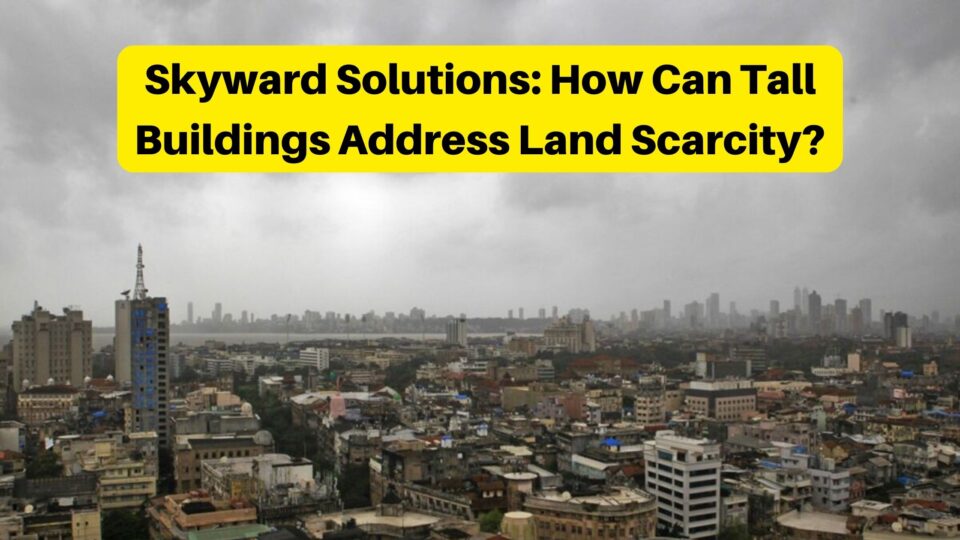The rise in rapid urbanisation and population explosion, humanity faces different challenges today. The major challenge is the limited availability of land. The expansion of cities allows the creation of innovative solutions that can accommodate the growing population. One solution is to create taller buildings that take less space and accommodate more people. Tall buildings offer several advantages, such as efficient land use, sustainable density, increased density and improved urban liveability.
Table of Contents
Increased Density and Efficient Land Use
Tall buildings present a unique opportunity to maximise the use of limited land resources. Cities can accommodate a significantly larger number of people and activities within a smaller footprint by building vertically. This increased density encourages vibrant urban communities and residents to work, live and access amenities in closer proximity. The efficient use of land also reduces urban sprawl, preserving valuable green spaces and promoting sustainable development practices. Now, in order to pilot the initiative, infra professionals deploy heavy-duty equipment. For example, architects and engineers often put a wheel loader to use to lift up heavy construction materials.
- Infrastructure
Tall buildings enable the stacking of multiple functions in a single structure, combining residential, commercial, and even recreational spaces. This mixed-use approach encourages urban vibrancy and supports a 24/7 city life, reducing commuting distances and associated carbon emissions. Moreover, vertical development facilitates the integration of transportation infrastructure, such as metro stations and bus terminals, directly within buildings, enhancing accessibility and connectivity.
- Vertical space optimisation
Tall buildings efficiently utilise limited land by going vertical, allowing for increased population density and accommodating a larger number of residents, businesses, and activities within a smaller footprint. This helps make the most of valuable land resources in crowded urban environments.
- Efficient land use
The upward construction of tall buildings minimises the need for urban sprawl and the associated infrastructure requirements. They enable the concentration of various functions, such as residential, commercial, and recreational, in a compact area. It reduces the need for extensive land development and minimises the strain on existing infrastructure.
Sustainable Design and Resource Efficiency
Sustainable design is an important factor in the future of urban development. The creation of tall buildings plays a vital role in achieving this goal. A team of engineers and architects is collaborating on developing advanced technologies. For the creation of energy-efficient and environmentally friendly skyscrapers. Advanced insulation systems, efficient lighting, and smart ventilation ensure reduced energy consumption and lower carbon footprints.
- Renewable Energy Resources
Vertical integration also enables the implementation of renewable energy sources. Tall buildings can harness wind and solar power through integrated turbines and photovoltaic systems, contributing to the overall energy independence of the structure. Moreover, the vertical orientation allows for the collection and reuse of rainwater, reducing the strain on existing water resources.
- Agriculture
Additionally, tall buildings offer the potential for vertical farming and urban agriculture. Rooftop gardens, hydroponic systems, and vertical farming modules can be integrated into skyscrapers, providing a local and sustainable food source. This innovative food production approach helps minimise transportation costs and reduces the environmental impact that is associated with
traditional farming methods.
- Preservation of green spaces
The consolidation development of vertically tall buildings helps preserve open green spaces and natural habitats. On the other hand, horizontal spreading takes more space into undeveloped land or encroaches on valuable ecological areas. Tall buildings help protect the environment by minimising land consumption.
Improved Urban Livability
Tall buildings enhance the overall quality of urban life. High-rise structures can provide breathtaking views of the cityscape, natural surroundings, or even access to rooftop parks and green spaces. These elements contribute to improved well-being and create a connection to the environment.
- Social Interaction
Moreover, tall buildings can foster community interaction and social cohesion. Residents share different amenities, such as rooftop gardens, public spaces, and gyms, allowing them to connect and interact. Vertical neighbourhoods also promote diverse and inclusive communities, accommodating a range of socioeconomic backgrounds and lifestyles within a single building.
- Safety and Security
Furthermore, tall buildings offer enhanced safety and security measures. For example, advanced fire safety systems, earthquake-resistant designs, and secure access control systems ensure the well-being of residents and occupants. This is particularly important in areas critical to natural disasters or where land availability restricts horizontal expansion. Also, it’s important to deploy an advanced forklift that can facilitate the carriage & movement of bricks, pallets, steel joists, etc.
Iconic Architecture
Tall buildings can be architectural landmarks that add character and identity to a city’s skyline, contributing to its cultural and economic significance. These renowned architectural wonders are crafted to establish a distinctive atmosphere and frequently act as popular tourist destinations. They can shape a city’s identity, and some of the most popular globally recognised skyscrapers include Burz Khalifa in Dubai, Merdeka 118 in Kuala Lumpur, Malaysia, and Shanghai Tower in Shanghai, China.
Conclusion
In the problem of limited land availability, tall buildings present a future-forward solution that addresses the challenges of urbanisation. By leveraging verticality, cities can efficiently use land resources, accommodate a larger population, and create vibrant, sustainable, and livable urban environments. Tall buildings can embody the concept of a future-ready city with sustainable design practices, resource efficiency, and improved urban amenities. As we look ahead, embracing the potential of tall buildings will be crucial for shaping the world’s future.
Also Check: Boost Work Output with JCB & ACE Machinery

